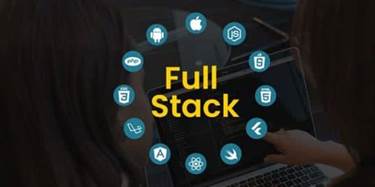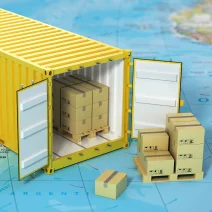What is embedded finance & what are the trends for 2023?
Len Covello helps companies differentiate loyalty programs to deliver a better experience for their customers. While there are a plethora of options for retailers to leverage their loyalty card offering to go above and beyond to appease consumers, none of them matter without the basics. Industries such as e-commerce, ride-sharing, and digital banking are leading in the market.

The key is to be practical and clear about monetization strategies, focusing on how to reach the volume necessary to justify the expense of building new capabilities. It makes sense to outline participation choices early, staying close to areas of strength and core capabilities. A fair share of what banks need they probably already have, so externalizing these services can become part of the first-draft architecture.
Embedded finance is booming, but still developing—let us help you determine if it’s right for your business
It makes buying faster and easier for customers, while providing opportunities for businesses to streamline backend processes and generate more revenue. Branded payment cards can be a win-win situation for both the financial institution and the non-financial company. The former can attract new customers and increase revenue through card usage, while the latter can attract new customers and increase brand loyalty by offering rewards and benefits specific to their products or services. They may even be able to earn a share of interchange, providing a new revenue stream for the business. To meet the rising demand for embedded finance, financial institutions are increasingly offering banking as a service (BaaS)—bundled offerings, often white-labeled or cobranded services, that nonbanks can use to serve their customers. Making it work will require new technologies and capabilities, because BaaS is usually distributed to clients via APIs and requires strong risk and compliance management of the embedded finance partner.
Larger banks, in turn, may lose their advantage in providing these services, due to regulatory arbitrage. For example, the Durbin Amendment limits debit card interchange fees for large banks, which favors smaller, Durbin-exempt banks to provide the infrastructure and licenses for products linked to debit cards. Point-of-sale (PoS) lending has existed as a credit option for consumers for many years. An alternative to BNPL, it’s often used for more expensive goods, such as furniture and large appliances, and includes interest, usually across 6- or 12-month terms—the fundamental difference between PoS lending and BNPL.
Increased customer sign-up and customer loyalty
Because this change in how people are making purchases isn’t going away (and it’s a growing addressable market for so many industries), there’s unlimited potential for B2B companies to leverage embedded finance trends to their advantage. Let’s examine the factors and key trends that are driving the surge of B2B embedded finance, as well as the opportunities for efficiency and growth potential it offers to those on all sides of the B2B payments transaction. In early iterations of B2B marketplaces, placing orders digitally was common, but the payment was handled offline. Excluding the payment process from the online buying experience decreases stickiness and value.

360marketupdatesis a credible source for gaining the market reports that will provide you with the lead your business needs. By keeping abreast of these emerging trends and innovations—from the foundational elements to the customer embedded finance trends experience and beyond—brands can adapt their credit card integration strategies to meet evolving consumer expectations. Swiping is no longer the only option with the advent of mobile wallets and tap-to-pay solutions.
In-house banking
By doing so, these marketplaces are taking on the credit risk of a buyer not paying in time to foster greater supplier loyalty. Additionally, a digital banking platform may offer customers the ability to apply for and receive a personal loan through the platform. Embedded payments can also be used for recurring or subscription-based payments, such as monthly subscription fees for a streaming service like Netflix. Additionally, embedded payments are used for peer-to-peer payments within a social media or messaging app, allowing users to send money to each other directly. A combination of industry, consumer, and macroeconomic factors will power the rise of embedded finance in Europe, the UK, and the US over the next decade.
- For example, embedded-finance distributors are offering prepaid cards to employees as part of earned-wage access programs; giving merchants the option to use their deposit accounts for instant-payments settlement.
- This will give platforms plenty of choice to curate partnerships that suit their needs.
- In 2023, the industry is growing at a steady rate and with the rising adoption of strategies by key manufacturers, the market is expected to rise over the projected horizon.
- This will flow from faster penetration of embedded payments among industries including retail and food services, where it will nearly double to capture 70% of SMB transaction volume.
- Today, growth in the embedded finance market is being driven by embedded finance trends in service, delivery and value that decide which firms are able to create successful, user-focused offerings that drive revenue and customer success.
- Additionally, 80% of organizations feel their competitive advantage has grown as a result of embedded finance adoption.
One of the most common types of embedded lending is ‘buy now, pay later’ solutions. This is when online stores enable customers to pay in regular instalments over an agreed period with zero interest, embedding the online checkout page with ‘‘buy now, pay later’ solutions.. You can also use embedded payments to pay for services like ride-hailing, food delivery, and other on-demand services, where the payment can be made directly within the app. This briefing is on embedded finance and will sit alongside similar regular updates in banking, payments, lending, marketing, and green finance.
Regulation as a Service
Additionally, 80% of organizations feel their competitive advantage has grown as a result of embedded finance adoption. FundThrough is here to help, and has plenty of experience working with large buyers across many different industries to simplify complex B2B payment processes typically done offline. Our business model helps level the playing field for SMBs by paying invoices ahead of net terms, in days – not months. In addition, the right embedded finance system should simplify the consumer feedback process. This will help companies to more thoroughly understand their customers’ pain points to improve the user experience.

By type, the FMI study finds that the embedded banking type has a high sales potential through 2033. Its growth is attributed to the rapid digitization of banking services and private banks, enhancing and transforming the customer experience. This provides an exciting opportunity (not to mention unlimited potential) for growth. As pandemic restrictions continue to ease and the world gets back to “normal,” B2B customers continue to expect and push for a more digital-first customer experience, opening a wealth of opportunities for buyers, suppliers, platform, and fintech companies alike. Embedded lending integrates lending solutions into a non-lending-specific app or service. This type of embedded finance allows customers to apply for and receive loans without having to leave the app or website—like the seamless experience offered by embedded payments.
Designing a New “Fitness Journey” in the Digital Experience Economy
By 2026, this market will grow to between $80 billion and $90 billion, with negligible growth of PoS transactions overall but an increasing share becoming embedded (see Figure 8). Studies show customers spend a little extra at checkout through BNPL, and platforms benefit through increased conversion with bigger basket sizes. Platforms may in time begin to renege on the current model, in which BNPL payers charge merchants and assume the risk of collection.
Among embedded-finance distributors and their end customers, demand is already maturing for a range of deposit, payment, issuing, and lending products (Exhibit 1). In addition to these traditional financial products, novel use cases are emerging. For example, embedded-finance distributors are offering prepaid cards to employees as part of earned-wage access programs; giving merchants the option to use their deposit accounts for instant-payments settlement.
Software plus payments: Better together
Of course, recent setbacks like the collapse of FTX, which at its peak had a valuation that rivaled that of a top-10 EU bank, clearly show there is still a lot of work ahead. However, as blockchain technology becomes more advanced — and as regulators hone in on creating frameworks to protect users better — DeFi and Web3 are sure to remain major players in embedded finance. Buy Now, Pay Later (BNPL) is an alternative payment method that is gaining massive traction, and not just because of the currently troubling economic climate with double-digit inflation rates in the EU. In fact, according to a recent report, the BNPL payments market in the UK is expected to grow by 35% annually, reaching a value of €39,600 million. This has ended up with businesses launching neobanks for their teams, helping improve employee retention by offering financial flexibility, payroll advances, and easier expense reconciliation.
Theo Healthplus.vn






Chưa có bình luận